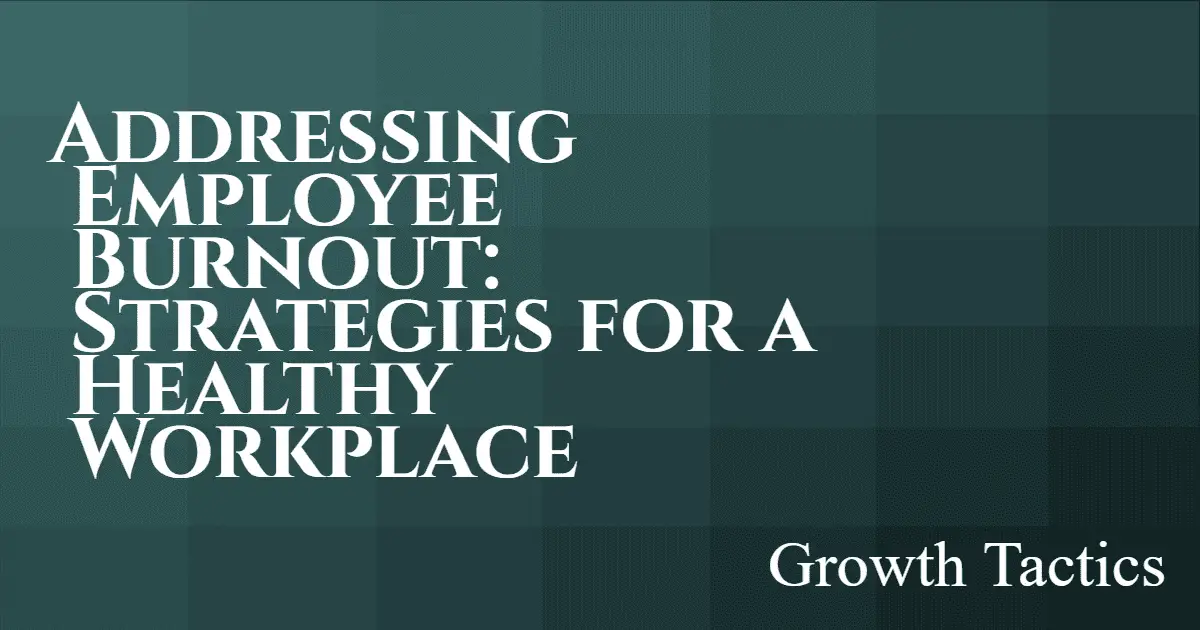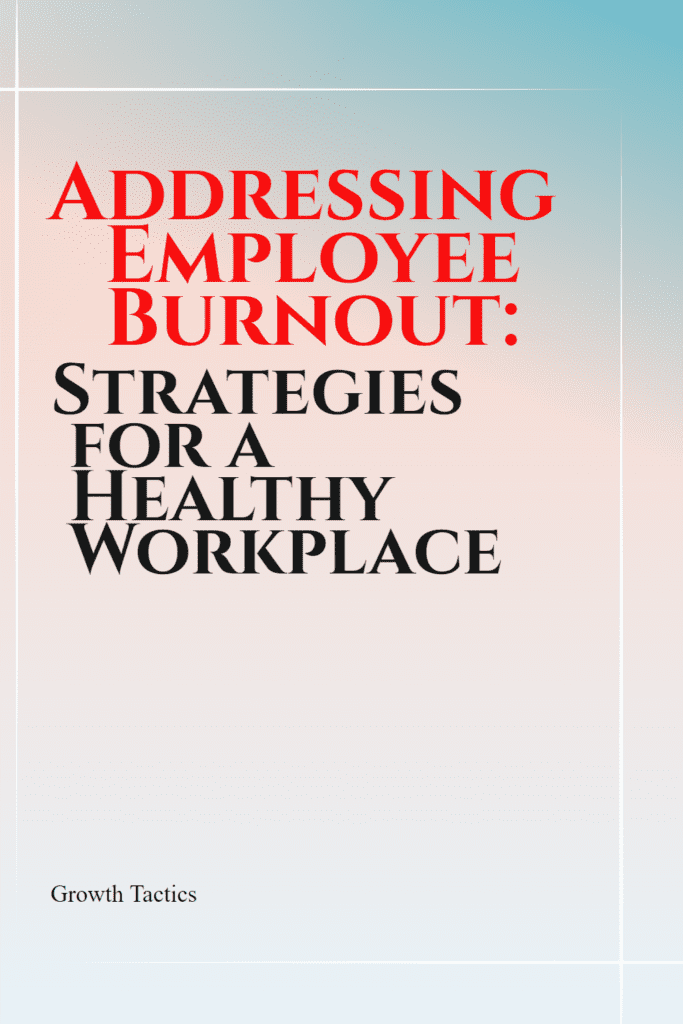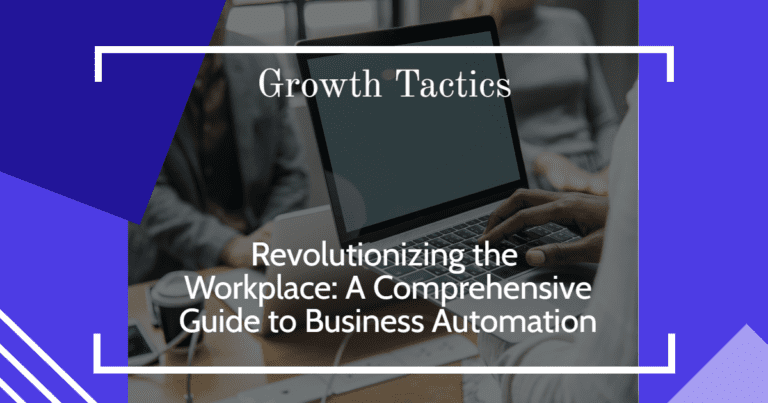Employee burnout is defined as a state of physical, emotional, and mental exhaustion caused by prolonged workplace stress. It often results from being overworked, lacking control, and feeling unfulfilled. Burnout is a critical issue today, with research indicating high rates across many industries.
Recent studies show that over half of employees have experienced burnout on the job. The 2022 Gallup State of the Global Workplace report found that 50% of employees deal with burnout sometimes, often, or always. Clearly, this signals a widespread problem requiring attention.
Jump To Section
The Negative Effects of Employee Burnout
Burnout takes a major toll on individuals and organizations. The negative impacts include:
- Lower productivity and performance
- Increased absenteeism
- Higher employee turnover
- Poorer quality of work
- More accidents and mistakes
Burned-out employees are also more likely to leave their positions. One estimate is that 95% of employees exit jobs because of burnout rather than salary considerations. Replacing these workers results in high replacement costs for employers.
In summary, burnout appears to be a growing crisis. It is harming individuals, undermining organizational success, and costing companies in many direct and indirect ways. As such, it’s in every stakeholder’s interest to address burnout and implement preventative strategies.
What Causes Employee Burnout?
Employee burnout is often caused by a variety of factors related to the workplace environment and culture. Some of the most common causes include:
-
Overwork/Excessive Workload – When employees are consistently handling more work than is reasonably manageable, it can quickly lead to burnout. Feeling overwhelmed by an endless to-do list, impossible deadlines, and lack of sufficient support are prime conditions for exhaustion.
-
Lack of Work-Life Balance – Without strong boundaries between work and personal life, employees struggle to ever feel “off the clock.” The inability to disconnect from the office and constant work contact outside of work hours leaves little time for self-care, relationships, and other priorities.
-
Poor Organizational Culture/Management – When company culture is toxic, insensitive, indifferent, or overly demanding, employees often feel disrespected, unsupported, and powerless – all fueling burnout. Weak management, lack of communication/feedback, and minimal autonomy also contribute.
-
Insufficient Recognition and Reward – Employees need to feel valued and know their efforts are making a meaningful impact. When hard work and dedication go unnoticed without adequate compensation, motivation is difficult to sustain before burnout kicks in.
-
Lack of Autonomy/Control – Micromanagement and rigid top-down policies that leave employees unable to influence decisions, work styles, and schedules lead to feeling trapped in unsustainable situations. Having no control breeds helplessness and detachment characteristic of burnout.
Signs an Employee is Experiencing Burnout
Burnout manifests in various ways, but there are some common signs employers should watch out for:
-
Exhaustion and fatigue – Burned-out employees often feel chronically exhausted and lack the energy to perform their work. Even after resting, they still feel drained.
-
Cynicism and negativity – Employees experiencing burnout tend to develop increased cynicism and negativity towards their work and organization. They feel disillusioned with their job.
-
Reduced productivity and effectiveness – Burnout takes a toll on employees’ ability to perform their job duties effectively. They struggle to complete tasks efficiently and see a decline in productivity.
-
Increased sick days and lateness – Burned-out employees tend to take more sick days, arrive late, and miss work more often. This absenteeism is a red flag.
-
Disengagement – Employees experiencing burnout often withdraw from colleagues, avoid social interactions, and seem detached. They may seem checked out.
-
Difficulty concentrating – Burnout can impair employees’ ability to focus and concentrate at work. They may struggle to retain information or make decisions.
-
Lack of motivation – Burned-out employees often lack the motivation and drive to perform their work. They may overlook details and struggle to care.
-
Physical symptoms – Headaches, stomach problems, muscle tension, and insomnia are some physical symptoms of burnout employees may experience.
Spotting these burnout warning signs early allows employers to step in and take action before valued talent decides to leave. Managers should be trained on what burnout looks like day-to-day and encouraged to check in with struggling employees. By addressing the root causes, employers can help relieve burnout before it’s too late.
Why Should Employers Care About Burnout?
Burnout is an issue that organizations cannot afford to ignore. When employees suffer from chronic workplace stress and burnout, it takes a real toll on productivity, performance, and the bottom line. Here are some of the major reasons employers should make preventing and reducing burnout a top priority:
-
Burnout hurts productivity and performance. Employees experiencing burnout tend to feel exhausted, detached, and unmotivated. This leads to declines in productivity, creativity, and job performance. Research indicates burnout can reduce individual productivity levels by nearly half.
-
Leads to higher turnover and loss of valuable talent. Burned-out employees are more likely to quit their jobs in pursuit of better work-life balance and relief from stress. Gallup estimates organizations lose $180 billion to $250 billion in lost productivity due to turnover related to employee burnout. When highly skilled employees leave, it often requires a great deal of time and resources to find suitable replacements.
-
Causes increased absences and healthcare costs. Burnout takes a toll on mental and physical health. Employees experiencing burnout tend to take more sick days. Healthcare claims and costs rise significantly for employees with burnout. One study found healthcare costs were nearly 50% higher for workers reporting burnout symptoms versus those without burnout.
-
Damages the organization’s reputation and culture. High levels of burnout across teams or organizations can erode workplace culture and lead to negative reputation effects. News coverage and word-of-mouth sharing about toxic work environments or extreme work demands make recruiting and retention much more difficult. Maintaining a healthy, engaged workforce is key to strong employer branding.
Maintaining a healthy, engaged workforce where employees feel valued and empowered is key for sustained organizational success. Prioritizing burnout prevention is not only an ethical imperative regarding employee well-being, but also makes good business sense given the multiple ways burnout can negatively impact organizations.
How Can Employers Prevent Employee Burnout?
Employers play a critical role in preventing employee burnout. There are several steps organizations can take to reduce burnout risk:
Offer Flexibility and Work-Life Balance Policies
-
Allow flexible schedules and remote work options when possible. Giving employees control over their time helps improve work-life balance.
-
Avoid overloaded schedules and encourage employees to take breaks throughout the day. Having reasonable workloads and downtime prevents burnout.
-
Provide generous vacation time and parental leave policies. Employees need opportunities to recharge away from work.
-
Discourage after-hours work communications. Let employees disconnect outside normal work hours.
-
Offer services like on-site childcare to reduce personal stresses.
Provide Support for Mental Health and Wellbeing
-
Destigmatize mental health issues and encourage open conversations. Employees should feel comfortable asking for help.
-
Train managers to identify warning signs and check in with struggling employees. Early intervention can prevent major burnout.
-
Offer free counseling through an employee assistance program (EAP). This provides a confidential resource.
-
Host wellness activities like yoga, meditation, or resilience training. This helps build coping skills.
-
Subsidize gym memberships or healthy lifestyle benefits. Encourage self-care.
Give Employees Autonomy and Decision Latitude
-
Provide autonomy in how work gets done. Micromanaging causes frustration.
-
Involve employees in decisions affecting their work. Lack of control contributes to burnout.
-
Offer training and growth opportunities. Employees need ways to develop skills.
-
Listen to feedback and implement suggested improvements. This empowers employees.
-
Praise employee accomplishments and contributions. Recognition is motivating.
Foster an Inclusive and Supportive Culture
-
Promote diversity, equity, and inclusion. Discrimination and unfairness are linked to burnout.
-
Have open communication between leadership and staff. Transparency builds trust.
-
Encourage team bonding and connections between colleagues. Strong workplace relationships provide support.
-
Address any toxic behaviors immediately. Bullying and harassment cannot be tolerated.
-
Show appreciation and care for employees as human beings. Well-being should be valued over profits.
Improve Workloads and Expectations
One of the most important ways employers can help prevent employee burnout is to evaluate workloads and adjust as needed. When employees are consistently overworked, it can quickly lead to burnout.
To improve workloads, start by looking at the overall workload and responsibilities for each role. Are employees expected to take on too many tasks or work unreasonable hours? If so, take steps to reduce expectations to a more manageable level.
Additionally, set clear goals and expectations for each employee so they understand priorities and don’t feel overwhelmed with undefined responsibilities. Make sure to communicate these goals regularly in one-on-one meetings.
Consider hiring additional staff if teams are understaffed. This allows you to distribute work more evenly. Even hiring temporary or contract workers can provide much-needed support during peak periods.
Look for ways to automate repetitive administrative tasks to free up employees’ time for more meaningful work. Administrative tasks that can be automated include data entry, scheduling, invoicing, reporting, and more. The right technology investments here can go a long way.
By evaluating workloads, setting clear expectations, adding staffing, and automating tasks, employers can significantly improve the day-to-day experience for employees. This helps create a sustainable workload and prevents employees from feeling overwhelmed and burned out.
Encourage Breaks, Vacation, and Unplugging
Burnout often results from a lack of recovery time for employees. While work demands and deadlines are unavoidable, organizations can take steps to ensure employees take breaks and fully disengage from work.
-
Make sure employees take their full lunch breaks. Discourage a culture of “working through lunch” and make sure managers aren’t pressuring employees to skip breaks. Taking a daily break to eat, move around, and reset helps productivity in the long run.
-
Ensure time off requests are supported, not discouraged. Make sure employees feel comfortable taking allotted vacation and sick time. Encourage employees to use vacation time, even if just for staycations or long weekends, to promote recovery from work.
-
Discourage after-hours communications. Make it clear that constant connectivity outside of work hours isn’t required or expected. Empower employees to disconnect outside of work and avoid burnout from being “always on.”
-
Discourage using PTO for catch-up work. Make sure employees know that vacation time is for true rest and recovery, not just catching up on other tasks. This helps reinforce taking a complete break.
-
Model healthy usage of breaks and PTO. Make sure management leads by example by taking lunches, vacation days, and disconnecting after work hours. This supports a culture that values rest and recovery.
By encouraging employees to fully take breaks, vacation time and disconnect outside of work, organizations combat a “always on” mentality that can quickly lead to burnout. Employees return refreshed and better able to handle workplace demands.
Offer Wellness Initiatives
A comprehensive employee wellness program can help prevent burnout by supporting mental and physical health. There are many options employers can consider:
-
Host wellbeing seminars and provide info resources. Lunch-and-learns, workshops, or webinars on topics like stress management, resilience, nutrition, exercise, sleep habits, mindfulness, and more. Provide health-related reading materials and online resources.
-
Provide gym benefits/reimbursements. Offer discounted gym memberships or reimburse for fitness expenses. Consider subsidizing yoga, meditation, or other wellness classes.
-
Offer counseling, therapy, and coaching services. Provide anonymous counseling through an employee assistance program (EAP). Cover therapy visits through health insurance. Offer life coaching, career coaching or mental health coaching.
A holistic wellness program shows employees their well-being is a priority. Giving access to support resources empowers staff to take control of their health. Encouraging work-life balance helps prevent chronic stress. With healthier and happier employees, organizations see less absenteeism, stronger engagement, and higher retention.
Train Managers to Identify Burnout
Managers play a critical role in identifying and preventing employee burnout. An important step is educating managers on the causes, signs, and solutions for burnout. They should be trained to spot the symptoms, have open conversations with employees, and make any necessary workload adjustments.
Some key ways managers can help prevent employee burnout include:
-
Learning the main causes of burnout like unreasonable workloads, unclear expectations, and lack of work-life balance. Managers should understand what factors commonly contribute to burnout.
-
Recognizing the warning signs like decreased motivation, cynicism, irritability, and declining performance. Managers interacting regularly with employees may detect emerging issues.
-
Having supportive check-ins and encouraging employees to share challenges without judgment. Employees should feel comfortable being transparent about work stressors.
-
Empowering managers to make workload changes if an employee is overloaded or facing burnout. They can redistribute assignments or hire additional help.
-
Promoting open communication, feedback channels, delegation, and employee engagement. Employees who feel supported and heard are less prone to burnout.
-
Suggesting and accommodating time off when an employee needs a break. Time away can renew passion and prevent reaching a breaking point.
With proper training to spot burnout, managers can have critical conversations early and implement solutions to support employee well-being. A culture of openness, balance, and care for people can make all the difference in reducing workplace burnout.
Check-In and Assess Employee Satisfaction
Regularly checking in with employees and assessing job satisfaction can help managers identify burnout risk factors and address issues early on. Consider implementing some of these strategies:
-
Conduct stay interviews and pulse surveys. Stay interviews are structured conversations managers have with employees to understand engagement and satisfaction. Pulse surveys anonymously collect employee feedback at regular intervals. Both allow employees to share concerns and feedback openly.
-
Provide anonymous channels for feedback. Many employees hesitate to voice concerns directly to managers. Providing anonymous survey options or suggestion boxes encourages honest input about problems causing stress or disengagement.
-
Track turnover rates, absenteeism, and productivity. Analyzing these workforce metrics can reveal burnout trends. If turnover and absenteeism rise while productivity drops, burnout may be an issue. Dig deeper through surveys and interviews to confirm.
Proactively monitoring employee satisfaction metrics empowers organizations to rapidly identify burnout risk factors and underlying issues. Managers can then take targeted action to improve the situation before valued talent chooses to leave. When employees feel their voices are heard, engagement improves.








